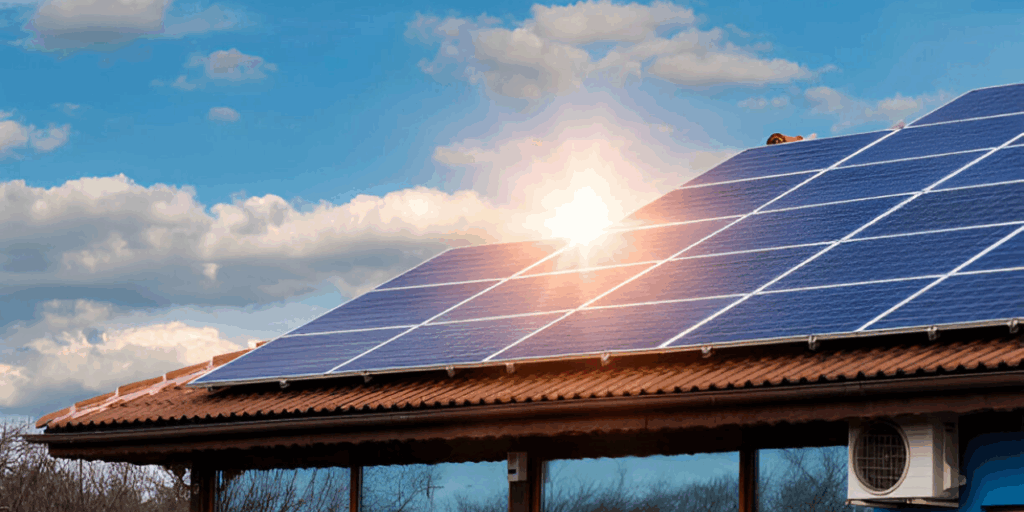Imagine generating your own electricity right from your rooftop! Yes, it’s not a dream anymore. Thanks to the power of renewable energy, especially solar, it has become a reality for many homes, shops, schools, and factories across India.
Today, rooftop solar systems are transforming how we use electricity. With just a few panels, the sunlight that hits your roof can be converted into clean, usable power. And if you’re living in a sunny place like Tamil Nadu’s Dharmapuri, this is even more practical. That’s why more people are searching for solar panel distributors in Dharmapuri and learning about how solar systems work.
But before getting started, there’s one important decision to make—net metering or gross metering? These are two different ways to connect your solar rooftop to the power grid. Let’s understand both in very simple terms.
The Power of Rooftop Solar in India
India receives a lot of sunshine, almost 300 sunny days in a year! That makes it perfect for solar power generation. To encourage people to install rooftop solar systems, the Indian Government has also launched several policies and subsidies.
But here’s the twist: solar power is generated only when the sun shines. That means there’s no power at night unless you use a battery system. Batteries, however, are expensive. So what’s the solution?
Connecting your solar system to the power grid. This way, you can take power from the grid when solar doesn’t work (like at night), and you can send your extra solar power back to the grid during the day.
This setup is made possible with net metering or gross metering, depending on which policy your state follows.
What is Net Metering?
Let’s say you install a solar system at home or your shop. During the day, it generates electricity. You use what you need, and any extra power goes to the electricity grid. At night, when your panels don’t produce power, you can take electricity from the grid.
So in the end, your bill shows only the difference between the power you took from the grid and the power you sent to the grid. This is net metering in simple words.
- You save on electricity bills.
- You may even get credit for the extra power you gave back.
- A bi-directional meter is used to measure how much you import and export.
- Different states calculate this balance monthly, every two months, or yearly.
For example, if your solar system generates 500 units in a month and you use only 400, the extra 100 units go to the grid. If your usage is more, you just pay for the extra units you used.
Looking to get started? Find trusted solar panel installation in Dharmapuri or contact solar panel installers in Dharmapuri like Gemini Solariss who offer expert guidance for setting up a net metering system at home or business.
What is Gross Metering?
Gross metering works a bit differently. Here, whatever power your solar system generates is sent to the grid. You do not use the solar power directly. Instead, you get paid for the solar power you send to the grid.
At the same time, all the electricity you use is taken from the grid and charged as usual.
- Two meters are installed: one for solar power you send out, and one for the electricity you use.
- You get a fixed Feed-in Tariff (a set rate) for every unit you export.
- But you still have to pay the normal rate for the electricity you use.
For example, if you generate 500 units of solar power and export it all, the government pays you a fixed amount for it (say ₹3 per unit). But when you use electricity from the grid, you might be paying a higher rate (say ₹6 per unit).
So, with gross metering, you earn for what you generate but don’t directly reduce your electricity bill like in net metering.
Gross metering is usually preferred by larger buildings, schools, or commercial units that have higher generation and can earn income by selling power.
Which is Better: Net Metering or Gross Metering?
It depends on your electricity usage and purpose.
✅ Net Metering is ideal for:
- Homes and small businesses
- People who want to lower their monthly bills
- Situations where most of the generated power is used during the day
✅ Gross Metering is better for:
- Large institutions or buildings with big roofs
- People who want to earn money from solar
- Areas where Feed-in Tariff is attractive
How to Get Started with Solar?
If you’re living in Dharmapuri and thinking about installing solar, you’re already on the right track. The weather is perfect, sunlight is abundant, and energy bills are rising.
The first step is to choose the right solar panel suppliers in Dharmapuri. A trusted company like Gemini Solariss can guide you in selecting the right system based on your budget and needs.
They provide:
- Complete consultation on which system fits you best
- High-quality panels and installation service
- Help with paperwork for government subsidies
- Easy net/gross metering setup support
Whether you’re searching for solar panel distributors in Dharmapuri or want professional solar panel installation in Dharmapuri, Gemini Solariss has the experience and solutions you need.
Why Choose Gemini Solariss?
At Gemini Solariss, we believe in making solar simple, affordable, and accessible for everyone. We’re not just a solar panel supplier in Dharmapuri — we’re your solar partners.
✔ We explain everything in easy words
✔ We guide you through net metering and gross metering
✔ We offer end-to-end services — from site visit to installation and after-sales support
✔ We use top-tier technology with excellent warranty
Don’t wait for electricity bills to rise. Make the switch today and enjoy clean, green energy right from your roof.
Want to get a free consultation or quote? Call Gemini Solariss – the most trusted solar panel installers in Dharmapuri






